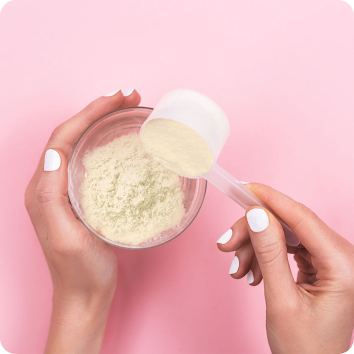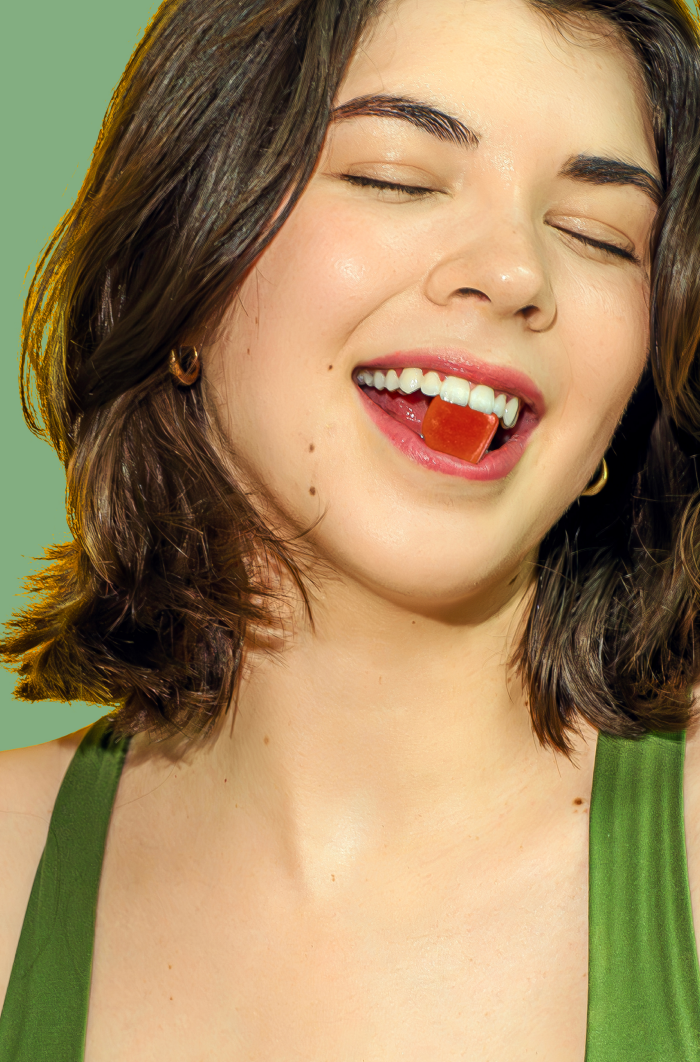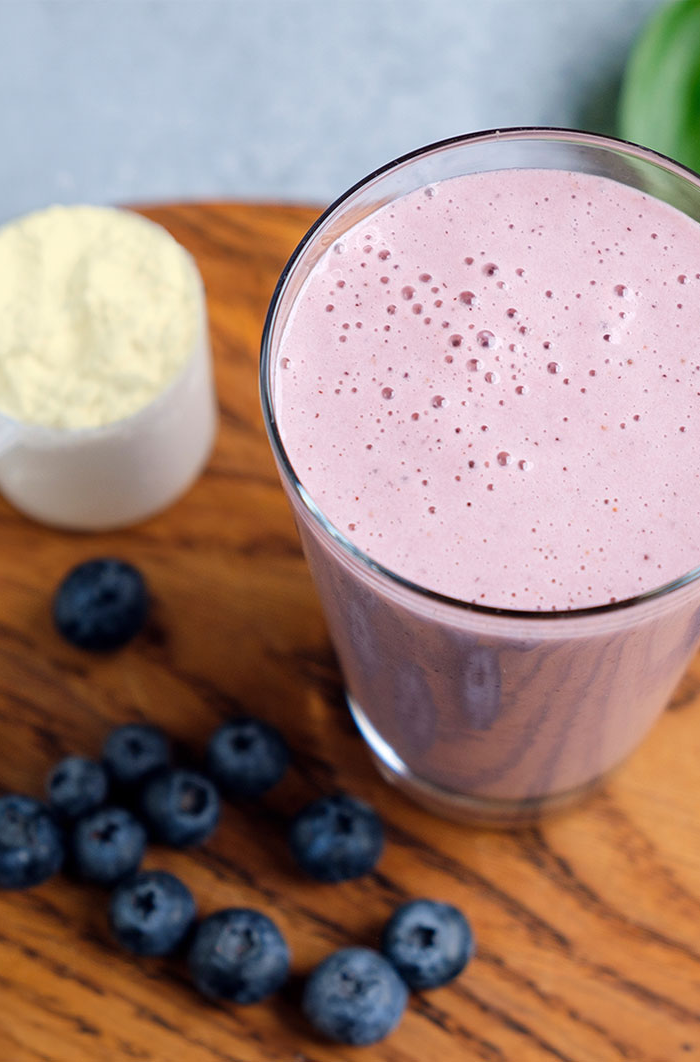
What Does Colostrum Look Like? Taking A Closer Look
Colostrum is often celebrated as the first and most important nourishment that mammals provide to their newborns. It's the foundation nature gives babies so they can grow and thrive, and now scientists have realized that gift can be used for adults as well. Known as "liquid gold" thanks to its rich golden color and health properties, colostrum is being recognized as a superfood.
If you're on a wellness journey, colostrum could benefit you. Take a moment to learn what colostrum is, what it looks like, and why it could be so helpful.
What Is Colostrum and Why Is It Special?

Colostrum is a type of breast milk that is distinguished as the initial milk produced from the mammary glands immediately after birth. In humans, this production period may only last a few days into the baby's life before a change to mature breast milk happens.
The colostrum made in those early days is exceptionally rich in antibodies, growth factors, and essential nutrients. It's made specifically to bolster the newborn's immune system and nutrient base, giving them a good foundation to grow on. Colostrum is a key factor in helping babies’ development in their first days of life while fighting infection.
Colostrum has earned the nickname "liquid gold" for more reasons than one. First, the milk tends to be a golden color due to the presence of beta-carotene. The name is also thanks to its high levels of nutrients, antioxidants, and antibodies. The bioactive compounds that have made colostrum into a valued supplement are essential for healthy growth and wellness and have shown benefits for people of all ages.
What Does Colostrum Look Like?

Not only does colostrum have a more intense nutritional composition than mature breast milk, but it also has a different color and look. Each lactating mother is different, so there can be variations in colostrum color and texture from mom to mom. There are a few characteristics that are generally present, however, to indicate that the milk is colostrum.
Colostrum Color and Beta-Carotene
If you're ever able to look at pure colostrum, you'll probably notice how different the color is from what most people think of as milk. Colostrum often has a rich, golden-yellow to orange hue, much more pronounced than the slight yellowish tone mature milk sometimes has. The striking color of colostrum mostly comes from high levels of beta-carotene.
Beta-carotene is a naturally occurring pigment found in plants such as carrots. Your body can use it to make vitamin A. It's essential for supporting healthy immune function and vision. The high levels of it in colostrum equip the body to perform essential functions.
Beta-carotene helps kickstart development for newborns, but it also has positive effects for adults:
- Antioxidant Protection: Beta-carotene is a powerful antioxidant that helps protect cells from oxidative damage from free radicals
- Enhanced Immune Function: Healthy doses of beta-carotene can increase the amount of infection-fighting cells
- Eye Health: This nutrient helps protect the eyes from age-related macular degeneration, especially when taken with other antioxidants
- Skin Health and UV Protection: Beta-carotene can help protect the skin from harmful UV radiation
- Supports Lung Health: Regular doses of beta-carotene have been linked to improved lung function and reduced symptoms from respiratory disorders.
More than just a pigment, beta-carotene is one of the critical reasons colostrum is so valuable.
Consistency
When wondering what colostrum looks like, you should also consider the consistency and texture. While mature milk tends to be relatively thin and watery, colostrum is thick and creamy. It may also be stickier than regular milk. The difference is because of the high protein content and lower amount of fat. Colostrum is structured to pack a nutritional punch for babies in their first days of life, so it is rich and thick to deliver all the needed antibodies, growth factors, vitamins, and minerals that are important in those first days.
Variations
As mentioned, every batch of colostrum may not look the same. There are different reasons for variations in colostrum color or consistency from one mother to the next. Factors such as the mother's diet and general health can influence colostrum development. For example, a diet rich in carotenoids can lead to higher levels of beta-carotene in colostrum, giving it a brighter golden color.
The appearance of colostrum also changes in the days post-birth. Colostrum is at its thickest and most nutrient-dense right after the delivery. It will evolve towards becoming mature milk shortly after that, with the consistency and color becoming more like regular milk. The different appearances of colostrum can provide visual cues about its richness in nutrients as well as about the health and dietary habits of the mother.
From Colostrum to Mature Milk
With such a brief production window in most mammals, colostrum can be in very limited supply. It's a good idea to understand how colostrum changes into other forms of breast milk and what the differences are. Each type plays a key part in a baby's development, but colostrum tends to be the most beneficial for supplementation for adults.
-
Colostrum: Produced during the first few days postpartum, colostrum is rich in antibodies and immune-boosting factors. It is typically produced in small quantities but is highly concentrated in nutrients that are essential for the newborn's early development.
-
Transitional Milk: Appearing around the fifth day postpartum, transitional milk marks the shift from colostrum to mature milk. It has a higher fat content and more lactose while still retaining some of the protective qualities of colostrum, though in lesser amounts.
-
Mature Milk: Typically produced from about two weeks postpartum, mature milk is thinner and has even higher levels of fat and lactose. It is produced in larger volumes to meet the nutritional demands of a growing baby, providing the necessary nutrients for continued development and health.
Colostrum is only produced during the first few days postpartum and usually in small quantities.
Transitional milk begins to appear by the fifth day postpartum, marking the start of the changeover to mature milk. Transitional milk has a higher fat content and more lactose, but it still retains many of colostrum's protective antibodies and immune-boosting factors, although in lower amounts. This transition is meant to mirror the baby's changing developmental and nutritional needs. The mother's body can also start producing higher volumes of milk at this point.
Mature breast milk production typically starts about two weeks postpartum. It is thinner, contains even higher volumes of fat and lactose, and is produced in larger amounts to meet the food demands of a growing baby. While it has lower levels of immune factors compared to colostrum, it is perfectly designed to continue supporting the baby's development, providing all the necessary nutrients for growth and health.
Studies have shown mixed results about the benefits of mature breast milk as a supplement, but there is much more evidence that colostrum can be useful thanks to its special mix of antibodies and growth factors that aren't present in other kinds of milk.
Benefits of Colostrum for Adults

It's clear to see how colostrum benefits newborns, but what can it do for adults?
It turns out there are a lot of advantages to using a colostrum supplement. Modern colostrum powder supplements, like Prelude, are derived from bovine colostrum, which is dairy cow milk. This means it's just as safe as the other dairy products you're used to, but people with dairy allergies or sensitivities may want to find alternatives. Bovine colostrum is very close in composition to human colostrum, so it's a good option for many.
If colostrum is a supplement you're considering, there are major benefits for your health. They impact your immune system, muscles, and even your skin.
Boosting the Immune System
One of the most significant positives of colostrum supplements is their ability to bolster the immune system. Colostrum is packed with high levels of antibodies, such as immunoglobulins IgA, IgG, and IgM.
These are great tools in the fight against pathogens and infections. Colostrum has become a popular supplement during cold season when the rate of upper-respiratory infections tends to increase. The immune-enhancing properties of colostrum make it an excellent addition to anyone's routine if they're wondering how to boost the immune system.
Muscle Repair and Strength Enhancement
Physical activity can take a toll on your muscles, but colostrum can help keep them strong. The supplement is packed with protein, giving your body resources to build up muscle.
Colostrum really shines when it comes to muscle repair. The presence of growth factors, particularly insulin-like growth factor-1 (IGF-1), helps in the recovery and growth of muscle tissues.
Promoting Skin Health
Another compound in colostrum can help your skin health: lactoferrin. This protein has potent anti-inflammatory and antibacterial properties. Lactoferrin helps decrease skin inflammation and fight bacterial infections, two of the common causes of acne and other skin conditions.
The growth factors in colostrum promote skin regeneration and reduce the signs of aging such as wrinkles and fine lines. Colostrum also promotes the body's collagen production to make your skin more elastic and less dull and is a good answer for how to regenerate skin faster.
Colostrum can also help joint health and digestive system. With one supplement, you can support several major systems in your body in a natural way.
Add Colostrum to Your Routine

Colostrum may look very different than the kinds of milk you typically picture, but its golden color and thick consistency hold very big benefits. Colostrum packs a lot of antioxidants, antibodies, proteins, and growth factors in a small package, and anyone can benefit at any age.
With Prelude’s high-quality colostrum supplement, you can give a boost to your immune system while helping your muscles and improving your skin health. To see how you could live better, learn more about Prelude Colostrum and try some for yourself.
















